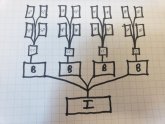Solar powered air conditioning in a RV is just a real tough problem.
To get the solar to feed your ac you have to park your tin can in the full sun which just makes the problem worse.
Yeh I have noticed its a bit of a sore subject. I wouldn't even necessarily plan to have the solar take the entire load of the AC, moreso just that it would prevent the batteries from draining in a very short period of time.




